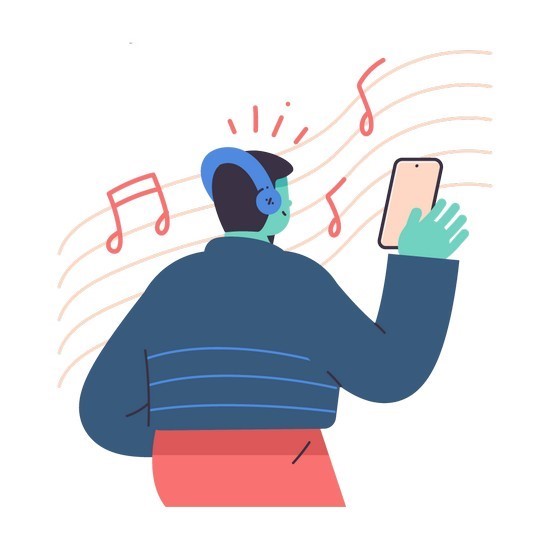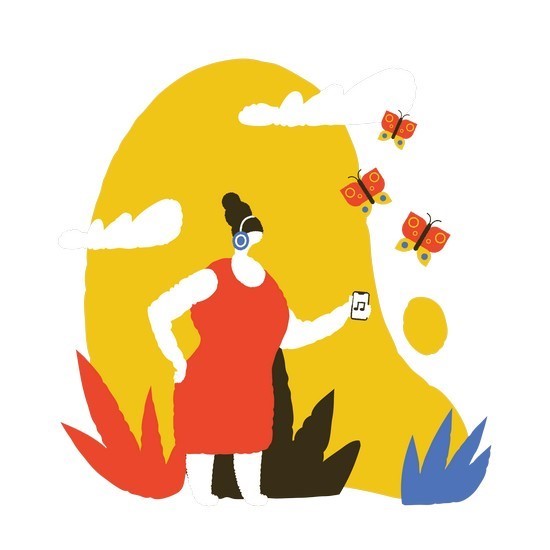When I heard the news that my mother had
suffered a stroke, the feeling that surfaced wasn’t despair, but an impulse to
problem solve.
First, the doctor’s medical jargon flooded into my
brain like ticker tape: a cerebrovascular accident due to embolism of the left
middle cerebral artery. Five milligrams of Eliquis and 50 milligrams of
Losartan and 50 more of Metoprolol, in addition to four other pills at morning,
noon and midnight.
اضافة اعلان
My brother and I compiled passwords to
medical insurance platforms, patient portals and bank accounts in a shared Notes app
entry. We filled out paperwork for long-term disability payments. We consulted
lawyers, wondering how to handle my mother’s employer, which had threatened to
fire her if she did not return to work.
 In an undated image provided by Sofia Crespo, visuals inspired by Laraaji’s “Being Here (Flow Goes the Universe).” (Photo: NYTimes)
In an undated image provided by Sofia Crespo, visuals inspired by Laraaji’s “Being Here (Flow Goes the Universe).” (Photo: NYTimes)
A month after the stroke, the night before my 29th
birthday, we were in an accident that totaled my mother’s car. In the hopes
that she would eventually be able to drive again, I gave her a few thousand
dollars of my savings toward buying a new one.
The stroke was not
the only crisis. There was the dread of the upcoming
US presidential election;
the ceaseless drag of the pandemic; the expectation to complete my master’s
degree while I cared for my mother; and the reality that, as an immigrant
family, our full support system was back home in the Dominican Republic. For
the most part, my brother and I were on our own.
So, I Googled. I made playlists.
I called one “if you need to breathe,” all
lowercase. I populated it with the soft-focus synth tones and obliterating
loops of ambient music. I scrolled through Spotify and stumbled upon dozens of
playlists engineered for mood regulation and self-care: “Peaceful Indie
Ambient,” “Lo-Fi Cool Down,” “Ambient Chill.” On Headspace, a meditation app
that costs $69.99 a year, I found curated soundscapes by savant producer Madlib
and songwriter
John Legend intended to conjure soothing atmospheres and
facilitate productive workdays.
It was clear that I was not alone. In recent years,
ambient music has become an escapist salve for a planet coping with mass death,
political instability, climate anxiety, the incessant culture of overwork and
the dissociation these conditions cause. The tech world has been quick to cash
in: In 2017, critic Liz Pelly wrote about the proliferation of
Spotify’s
“chill” playlists, referring to it as “an ambition to turn all music into
emotional wallpaper.” This is late capitalist Muzak, smooth-brain anesthesia to
pacify the mind.

But in the months after my mother’s stroke, after I
re-matriated into her one-bedroom apartment in
Chicago, ambient music was not
just some commodified act of self-care. Listening to it demanded that I
relinquish control. It asked me to dispense with progressive time. It forced me
to slow down and confront collapse.
At the top of “if you need to breathe” is Alessandro
Cortini’s “Iniziare.” Cortini, an Italian musician who started out as a
guitarist, keyboardist, and bassist for Nine Inch Nails, is also known for his
ghostly, narrative-driven synth music. On “Iniziare,” Cortini arrests time.
A single synth tone, at first bound to the earth,
floats 40,000 feet in the air, spiraling into astral fragments. Ripples of
electronic feedback crest into peaks and valleys of stretched echoes, decayed
into hollowed abysses. Time becomes supple, pliant, disobedient. Listening to
it, I am forced to close my eyes, to feel the way that sound travels over the
body, shape-shifting into nonlinear drift. I am detached from any deterministic
version of the future. In this place between lightness and darkness, pleasure
and pain exist in equal measure. I experience all the fragmentation of life,
the reminders of trauma and uncertainty I have woken up to for the past four
months. Here, I refuse to let grief become self-definition: I live unfettered
from the speed of emergency.
Ambient music has
always contained a kind of subterranean knowing. British musician and critic
David Toop, who wrote “Ocean of Sound,” the defining 1995 text on the music,
recently argued that it has become severed from the philosophical qualities
suggested during its genesis in the 1970s. Back then, ambient represented an
alternate protocol for listening and music-making. In a 2019 essay, Toop refers
to it as a musical form “committed (implicitly or explicitly) to an engagement
with interpretations and articulations of place, environment, listening,
silence, and time.” In his view, it is music that inspires “a state of mind
attuned to inclusivity,” rather than “withdrawal.”

And yet, the dominant vision of ambient music today
is a cartoonish inversion of these aspirations. In a multibillion-dollar
wellness industry, streaming platforms, and meditation apps frame ambient as
background music — something for detached listening and consumption. It is spa
and
yoga music, or field recordings for undisturbed, restful sleep. Instead of
embracing ambient’s potential — its capacity to soften barriers and loosen
ideas of sound, politics, temporality, and space — the music has become
instrumentalized, diminished into sound-as-backdrop.
Experimental music pioneer Pauline Oliveros foresaw
how a sensorial approach to music and listening could cultivate politically
dynamic thinking. She spent her life developing a theory of deep listening, a
practice that promotes radical attentiveness. In this approach, there is a
distinction between hearing versus listening; the former is a surface-level
awareness of space and temporality, and the second is an act of immersive
focus.
I practiced deep listening with my “if you need to
breathe” playlist, especially with new age innovator Laraaji’s composition
“Being Here.” It is hard to pinpoint exactly when “Being Here” clicks: maybe
it’s at the 10-minute mark, or the 15-minute mark or even at its beatific,
25-minute close. Laraaji, who has been releasing music since the late 1970s,
produces aural glossolalia — divine, luminescent melodic debris. Listening to
his music, I am held in an unspoken embrace with his vision of the present,
notes refracting like sunlight caressing the azure waters of the ocean. This is
music that curls into the ears, mutating into an imagined Elysium, stopping
time and space. It’s not just scenery, not a simple balm for immeasurable pain.
For some, the lessons of “Being Here” might recall
some sort of empty practice of mindfulness, a concept so often misappropriated
as a wellness
buzzword. That enterprise often tells us to “be present” so that
we can self-optimize and better function as workers and individuals, rather
than as humans who are part of a community.

But “Being Here” is not a demand to recharge for
productivity. It asked me to forget the looping of time, to disengage with any
kind of predictive chronology — about my mother’s recovery, but also about
surviving a continuous state of hardship. Being here, slowing down, was not
about inactivity or lack of energy. It was about releasing myself from the
imperative to withdraw in the face of precariousness. It was an insurgent break
in time — a call to drench myself in the reality of a catastrophic present and
to equip myself to do something about it.
I won’t pretend ambient music is some kind of
comprehensive solution for a world contending with death, war, and devastation.
But I do wonder how, on an infinitesimal scale, listening closely might free us
from the logic of hasty, individualistic action. When I force myself to listen
closely, I hear a refusal to analyze, judge, and act with immediacy. In its
call to suspend time, the music carries the potential to press pause on the
punishing velocity that attends disaster, that robs our attention and
predetermines a fixed future. I hear the promise to act deliberately,
collectively and with care, to embrace intentional observation and action — the
durational practice of a lifetime.
Read more Health
Jordan News



